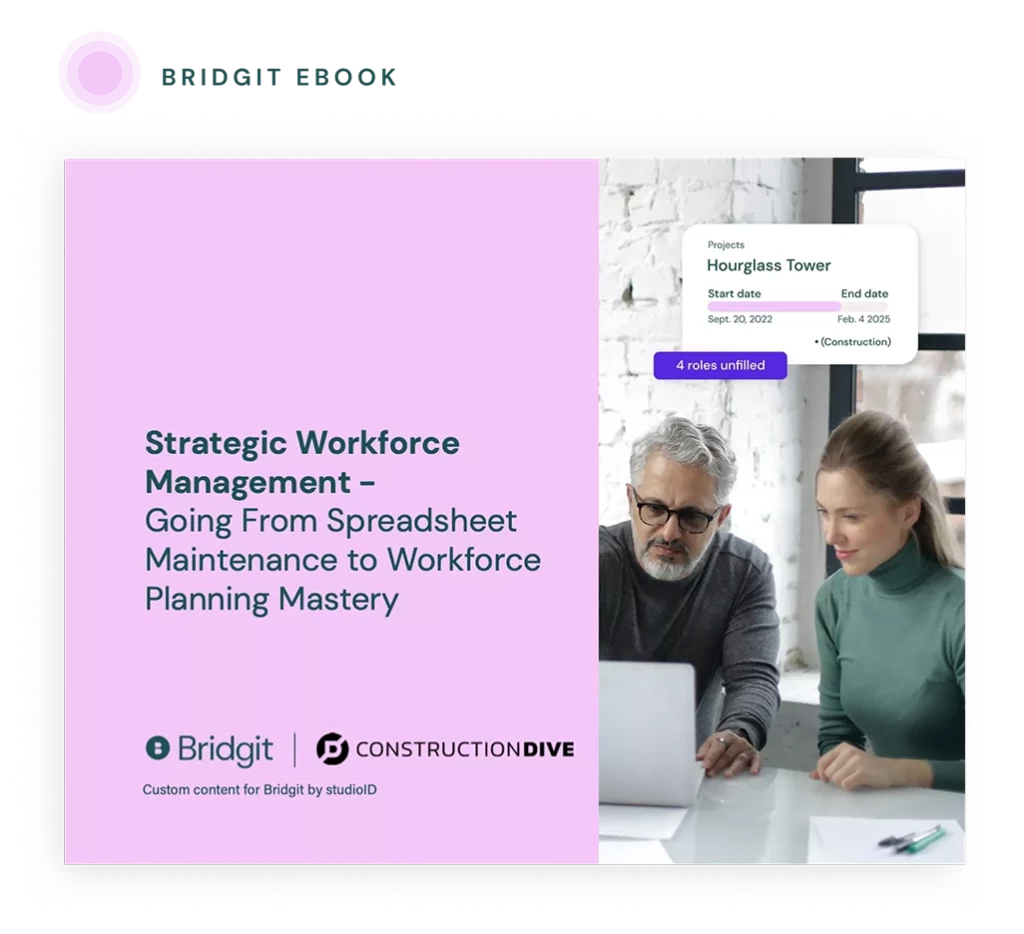Effective labor management in construction is essential for avoiding delays and other inefficiencies. The current situation with COVID-19 has made labor management even trickier than it already was. Rest assured, however. This post will give detailed tips for improving your labor management strategy.
Table of Contents
Ten tips for improving labor management in construction
1. Choose your workforce management software wisely
Good remote workforce management software can help your company navigate the new construction landscape effectively. While labor management software was always crucial, it’s even more so given the additional complexities of tracking quarantines and the pandemic’s effect on operations. Setting up employment dates is also essential to keep track of new hires and termination dates and gain an accurate record of the availability of your team members.
You should look for software that adequately addresses these concerns and all others related to labor management in the construction industry. That may mean adding new integrations to your existing suite or even changing it altogether. Always test the software before you implement it. You can request a demo from Bridgit.
2. Make collaboration a key part of your planning
Everyone on your team has the potential to contribute insights that make your workforce management more efficient. However, you can’t unlock this potential until you make a concerted effort to facilitate collaboration. Here are three fantastic ways to achieve this:
- Increase transparency
- Delegate
- Create agendas that encourage input from your team
Check out this blog, which details how stronger collaboration significantly reduces stress.

Looking to be more strategic with your people?
We partnered with Construction Dive to outline the steps any contractor can take to be more strategic with their workforce management.
3. Prioritize all aspects of health and safety
While COVID-19 continues to be the prime focus of healthcare systems in North America, it’s more important than ever that you maintain worker safety in all other aspects. Implement measures to prevent laborers from working excessive hours, which can lead to underperformance and dangerous mistakes.
4. Plan with holidays and other work stops/restarts in mind
Maintaining momentum is a key part of labor management in the construction industry. Holidays can wrench your momentum but are crucial for worker morale.
The solution is to plan important blocks of work so that they are completed between holidays. Ideally, workers returning from a holiday should be starting something new rather than attempting to pick up a task they left unfinished prior to a week of festivities.
This is among the benefits of using Gantt charts for scheduling. The layout makes it easier to visualize overlapping activities.
5. Know the key metrics
Data is crucial to effective labor management in the construction industry. Good workforce management software will help you pull key metrics from this data. Your workforce utilization rate is an important metric, an understanding that can help you balance your team’s time efficiently. Read this post for some more tips on how you can gain key insights from your construction workforce planning data.
6. Mind the (skill) gaps
There will invariably be gaps in most job candidates’ skills and the skills your company needs. A key part of labour management in construction is creating an environment that fosters development and moulds workers into what you need.
This is closely related to balancing your workforce utilization rate. Workers who spend all of their time “putting out fires” (as Stephen Covey called it in his classic book “The 7 Habits of Highly Effective People”) cannot focus on developing skills that benefit your company beyond satisfying its most urgent project needs. We wrote this article to give you some tips on reducing skill gaps.
7. Nip underperformance in the bud
Labor management in construction isn’t always pleasant. Sometimes, you have to address underperforming employees. This doesn’t have to be confrontational, though. While worker underperformance can be the result of laziness or incompetence, it can also be a sign that you’re working employees too hard or not providing the growth opportunities that would energize them.
This is connected to item #2 on this list: “Make Collaboration a Key Part of Your Planning.” By involving as many of your team members as possible, you should be able to identify and address any potential issues that might lead to lackluster performance.
8. Manage all of your resources well
Another key aspect of labor management in the construction industry is ensuring that your team has the resources they need to succeed. You need an effective strategy for tracking where your equipment and materials are being used. Otherwise, you’ll find that your workers are often left standing around because you scheduled them for a job that requires equipment already being used elsewhere.
This goes back to choosing your software wisely. Labor management in construction is not independent of other considerations. Your software suite should reflect the multi-faceted nature of running a construction company.
Bridgit CEO Mallorie Brodie talked with VP and Director of Project Management Jason Harrison about the challenges of resource planning amid the current climate.
9. Map out your construction manpower planning meetings ahead of time
Construction manpower meetings are most effective when you have a framework that shapes the conversation around what matters. We’ve all been in meetings where much was said, yet little was accomplished. You can avoid that by taking key initiatives such as allocating a specific team member to lead manpower meetings and using your software to create a single source of truth on which everyone can base their ideas.
10. Track key performance indicators (KPIs)
Tracking KPIs is among the most important aspects of parsing construction workforce data. It can tell you what aspects of your strategy are working and which need a revamp. A lack of understanding regarding KPIs in the construction industry is partially to blame for the lack of digitization up until now. Companies are scrambling to implement better tracking as key parts of their empires move online.
This article will give you a very in-depth rundown of KPIs related to the construction industry.
Why effective labor management in construction is so important
Improving your labor management process can require some substantial overhauls. It’s more than worth it, however, for the following reasons.
Less downtime
Poor labor management in the construction industry routinely leads to idle time in which your workers neither handle pressing tasks nor develop. Of course, this also costs you money since unions have implemented very strong worker protections that ensure pay as long as boots are on the job site.
Reduce overall costs
The intersection of labor-management with workforce management and other key areas of running a construction business means you’ll be much more poised to reduce unnecessary costs throughout your entire operation.
Better efficiency with deadlines
Construction is a very deadline-driven industry. Productivity across entire projects can collapse quickly when even a single aspect is delayed. Effective labor management avoids this.
Maintain/improve your reputation
A good labor management strategy can ensure that your company remains one people want to work for and with. By hitting deadlines and encouraging worker development, you’ll establish yourself as a firm all stakeholders can trust. Said stakeholders will often ask for data and metrics you’ll only have if you’ve taken labor management seriously.


